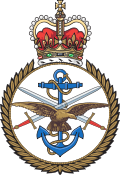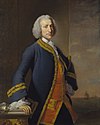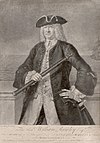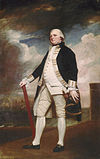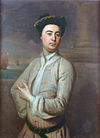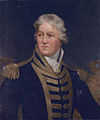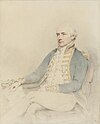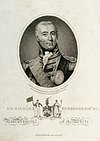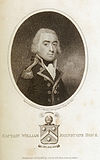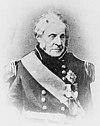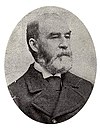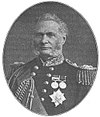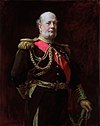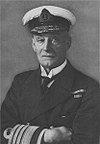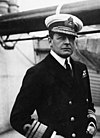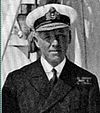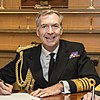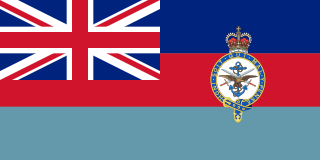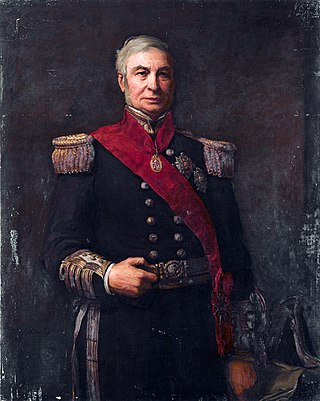| No. | Portrait | Name | Took office | Left office | Time in office | Ref. |
|---|
| Senior Naval Lords |
|---|
| 1 | | Herbert, ArthurAdmiral
Arthur Herbert
(c. 1648–1716) | 8 March 1689 | 20 January 1690 | 318 days | |
| 2 | | Chicheley, JohnRear-Admiral
Sir John Chicheley
(c. 1640–1691) | 20 January 1690 | 5 June 1690 | 136 days | |
| 3 | | Russell, EdwardAdmiral of the Fleet
Edward Russell
(1653–1727) | 5 June 1690 | 23 January 1691 | 232 days | |
| 4 | | Priestman, HenryCaptain
Henry Priestman
(c. 1647–1712) | 23 January 1691 | 2 May 1694 | 3 years, 99 days | |
| (3) | | Russell, EdwardAdmiral of the Fleet
The Earl of Orford
(1653–1727) | 2 May 1694 | 31 May 1699 | 5 years, 29 days | |
| 5 | | Rooke, GeorgeAdmiral of the Fleet
Sir George Rooke
(1650–1709) | 31 May 1699 | 26 January 1702 | 2 years, 240 days | |
| 6 | | Leake, JohnAdmiral of the Fleet
Sir John Leake
(1656–1720) | 8 November 1709 | 4 October 1710 | 330 days | [16] |
| 7 | | Byng, GeorgeAdmiral
Sir George Byng
(1663–1733) | 4 October 1710 | 30 September 1712 | 1 year, 362 days | [16] |
| (6) | | Leake, JohnAdmiral of the Fleet
Sir John Leake
(1656–1720) | 30 September 1712 | 14 October 1714 | 2 years, 14 days | [16] |
| (7) | | Byng, GeorgeAdmiral
Sir George Byng
(1663–1733) | 14 October 1714 | 16 April 1717 | 2 years, 184 days | [16] |
| 8 | | Aylmer, MatthewAdmiral of the Fleet
Matthew Aylmer
(c. 1650–1720) | 16 April 1717 | 19 March 1718 | 337 days | [16] |
| (7) | | Byng, GeorgeAdmiral of the Fleet
Sir George Byng
(1663–1733) | 19 March 1718 | 30 September 1721 | 3 years, 195 days | [16] |
| 9 | | Jennings, JohnAdmiral
Sir John Jennings
(1664–1743) | 30 September 1721 | 1 June 1727 | 5 years, 244 days | [16] |
| 10 | | Norris, JohnAdmiral
Sir John Norris
(c. 1670–1749) | 1 June 1727 | 13 May 1730 | 2 years, 346 days | [16] |
| 11 | | Wager, CharlesAdmiral
Sir Charles Wager
(1666–1743) | 13 May 1730 | 23 June 1733 | 3 years, 41 days | [16] |
| 12 | | Hamilton, ArchibaldCaptain
Lord Archibald Hamilton
(1673–1754) | 23 June 1733 | 13 March 1738 | 4 years, 263 days | [16] |
| 13 | | Powlett, Harry Lord Harry Powlett
(1691–1759) | 13 March 1738 | 19 March 1742 | 4 years, 6 days | [16] |
| (12) | | Hamilton, ArchibaldCaptain
Lord Archibald Hamilton
(1673–1754) | 19 March 1742 | 25 March 1746 | 4 years, 6 days | [16] |
| 14 | | Beauclerk, VereAdmiral
Lord Vere Beauclerk
(1699–1781) | 25 March 1746 | 18 November 1749 | 3 years, 238 days | [16] |
| 15 | | Anson, GeorgeAdmiral
The Lord Anson
(1697–1762) | 18 November 1749 | 22 June 1751 | 1 year, 216 days | [16] |
| 16 | | Rowley, WilliamAdmiral
Sir William Rowley
(c. 1690–1768) | 22 June 1751 | 17 November 1756 | 5 years, 148 days | [16] |
| 17 | | Boscawen, EdwardVice-Admiral
The Honourable Edward Boscawen
(1711–1761) | 17 November 1756 | 6 April 1757 | 140 days | [16] |
| (16) | | Rowley, WilliamAdmiral
Sir William Rowley
(c. 1690–1768) | 6 April 1757 | 2 July 1757 | 87 days | [16] |
| (17) | | Boscawen, EdwardAdmiral
The Honourable Edward Boscawen
(1711–1761) | 2 July 1757 | 19 March 1761 | 3 years, 260 days | [16] |
| 18 | | Forbes, JohnAdmiral
The Honourable John Forbes
(1714–1796) | 19 March 1761 | 20 April 1763 | 2 years, 32 days | [16] |
| 19 | | Howe, RichardCaptain
The Lord Howe
(1726–1799) | 20 April 1763 | 31 July 1765 | 2 years, 102 days | [16] |
| 20 | | Saunders, CharlesVice-Admiral
Sir Charles Saunders
(c. 1715–1775) | 31 July 1765 | 15 September 1766 | 1 year, 46 days | [16] |
| 21 | | Keppel, AugustusRear-Admiral
The Honourable Augustus Keppel
(1725–1786) | 15 September 1766 | 11 December 1766 | 87 days | [16] |
| 22 | | Brett, PeircyRear-Admiral
Sir Peircy Brett
(1709–1781) | 11 December 1766 | 28 February 1770 | 3 years, 79 days | [16] |
| 23 | | Holburne, FrancisAdmiral
Francis Holburne
(1704–1771) | 28 February 1770 | 2 February 1771 | 339 days | [16] |
| First Naval Lords |
|---|
| 24 | | Hervey, AugustusCaptain
Augustus Hervey
(1724–1779) | 2 February 1771 | 12 April 1775 | 4 years, 69 days | |
| 25 | | Palliser, HughVice-Admiral
Sir Hugh Palliser
(1723–1796) | 12 April 1775 | 23 September 1779 | 4 years, 164 days | |
| 26 | | Palliser, HughVice-Admiral
Robert Man | 23 September 1779 | 22 September 1780 | 365 days | |
| 27 | | Darby, GeorgeVice-Admiral
George Darby
(c. 1720–1790) | 22 September 1780 | 1 April 1782 | 1 year, 191 days | |
| 28 | | Harland, RobertAdmiral
Sir Robert Harland
(c. 1715–1784) | 1 April 1782 | 30 January 1783 | 304 days | |
| 29 | | Pigot, HughAdmiral
Hugh Pigot
(1722–1792) | 30 January 1783 | 31 December 1783 | 335 days | |
| 30 | | Leveson-Gower, JohnRear-Admiral
John Leveson-Gower
(1740–1792) | 31 December 1783 | 12 August 1789 | 5 years, 224 days | |
| 31 | | Hood, SamuelAdmiral
The Lord Hood
(1724–1816) | 12 August 1789 | 7 March 1795 | 5 years, 207 days | |
| 32 | | Middleton, CharlesVice-Admiral
Sir Charles Middleton
(1726–1813) | 7 March 1795 | 20 November 1795 | 258 days | |
| 33 | | Gambier, JamesVice-Admiral
James Gambier
(1756–1833) | 20 November 1795 | 19 February 1801 | 5 years, 91 days | |
| 34 | | Troubridge, ThomasRear-Admiral
Sir Thomas Troubridge
(c. 1758–1807) | 19 February 1801 | 15 May 1804 | 3 years, 86 days | |
| (33) | | Gambier JamesVice Admiral
James Gambier
(1756–1833) | 15 May 1804 | 10 February 1806 | 1 year, 271 days | |
| 35 | | Markham, JohnRear Admiral
John Markham
(1761–1827) | 10 February 1806 | 6 April 1807 | 1 year, 55 days | |
| (33) | | Gambier, JamesAdmiral
James Gambier
(1756–1833) | 6 April 1807 | 9 May 1808 | 1 year, 33 days | |
| 36 | | Bickerton, RichardVice Admiral
Sir Richard Bickerton
(1759–1832) | 9 May 1808 | 25 March 1812 | 3 years, 321 days | |
| 37 | | Domett, WilliamVice Admiral
William Domett
(1752–1828) | 25 March 1812 | 23 October 1813 | 1 year, 212 days | |
| 38 | | Yorke, JosephVice Admiral
Sir Joseph Yorke
(1768–1831) | 23 October 1813 | 24 May 1816 | 2 years, 214 days | |
| 39 | | Moore, GrahamVice Admiral
Sir Graham Moore
(1764–1843) | 24 May 1816 | 13 March 1820 | 3 years, 294 days | |
| 40 | | Johnstone Hope, WilliamVice Admiral
Sir William Johnstone Hope
(1766–1831) | 13 March 1820 | 2 May 1827 | 7 years, 50 days | |
| 41 | | Cockburn, GeorgeVice Admiral
Sir George Cockburn
(1772–1853) | 19 September 1828 | 25 November 1830 | 2 years, 67 days | |
| 42 | | Hardy, ThomasRear Admiral
Sir Thomas Hardy
(1769–1839) | 25 November 1830 | 1 August 1834 | 3 years, 249 days | |
| 43 | | Dundas, GeorgeRear Admiral
The Hon. Sir George Dundas
(1778–1834) | 1 August 1834 | 1 November 1834 | 92 days | |
| 44 | | Adam, CharlesRear Admiral
Sir Charles Adam
(1780–1853) | 1 November 1834 | 23 December 1834 | 52 days | |
| (41) | | Cockburn, GeorgeVice Admiral
Sir George Cockburn
(1772–1853) | 23 December 1834 | 25 April 1835 | 123 days | |
| (44) | | Adam, CharlesVice Admiral
Sir Charles Adam
(1780–1853) | 25 April 1835 | 8 September 1841 | 6 years, 197 days | |
| (41) | | Cockburn, GeorgeAdmiral
Sir George Cockburn
(1772–1853) | 8 September 1841 | 13 July 1846 | 4 years, 308 days | |
| 45 | | Parker, WilliamVice Admiral
Sir William Parker
(1781–1866) | 13 July 1846 | 24 July 1846 | 11 days | |
| (44) | | Adam, CharlesVice Admiral
Sir Charles Adam
(1780–1853) | 24 July 1846 | 20 July 1847 | 361 days | |
| 46 | | Dundas, JamesRear Admiral
Sir James Dundas
(1785–1862) | 20 July 1847 | 13 February 1852 | 4 years, 208 days | |
| 47 | | Berkeley, MauriceRear Admiral
The Hon. Maurice Fitzhardinge Berkeley
(1788–1867) | 13 February 1852 | 2 March 1852 | 18 days | |
| 48 | | Parker, HydeVice Admiral
Hyde Parker
(1784–1854) | 2 March 1852 | 26 May 1854 | 2 years, 85 days | |
| (47) | | Berkeley, MauriceVice Admiral
The Hon. Maurice Fitzhardinge Berkeley
(1788–1867) | 26 May 1854 | 24 November 1857 | 2 years, 182 days | |
| 48 | | Dundas, RichardVice Admiral
The Hon. Sir Richard Saunders Dundas
(1802–1861) | 24 November 1857 | 8 March 1858 | 104 days | |
| 49 | | Martin, WilliamVice Admiral
Sir William Martin
(1801–1895) | 8 March 1858 | 28 June 1859 | 1 year, 112 days | |
| (48) | | Dundas, RichardVice Admiral
The Hon. Sir Richard Saunders Dundas
(1802–1861) | 28 June 1859 | 15 June 1861 | 1 year, 352 days | |
| 50 | | Grey, FrederickAdmiral
The Hon. Sir Frederick Grey
(1805–1878) | 15 June 1861 | 13 July 1866 | 5 years, 28 days | |
| 51 | | Milne, AlexanderVice Admiral
Sir Alexander Milne
(1806–1896) | 13 July 1866 | 18 December 1868 | 2 years, 158 days | |
| 52 | | Dacres, SydneyAdmiral
Sir Sydney Dacres
(1804–1884) | 18 December 1868 | 27 November 1872 | 3 years, 345 days | |
| (51) | | Milne, AlexanderAdmiral
Sir Alexander Milne
(1806–1896) | 27 November 1872 | 7 September 1876 | 3 years, 285 days | [17] |
| 53 | | Yelverton, HastingsAdmiral
Sir Hastings Yelverton
(1808–1878) | 7 September 1876 | 5 November 1877 | 1 year, 59 days | [17] |
| 54 | | Wellesley, GeorgeAdmiral
Sir George Wellesley
(1814–1901) | 5 November 1877 | 12 August 1879 | 1 year, 280 days | [17] |
| 55 | | Key, AstleyAdmiral
Sir Astley Cooper Key
(1821–1888) | 12 August 1879 | 1 July 1885 | 5 years, 323 days | [17] |
| 56 | | Hood, ArthurAdmiral
Sir Arthur Hood
(1824–1901) | 1 July 1885 | 15 February 1886 | 229 days | [17] |
| 57 | | Hay, JohnAdmiral
Lord John Hay
(1827–1916) | 15 February 1886 | 9 August 1886 | 175 days | [17] |
| (56) | | Hood, ArthurAdmiral
Sir Arthur Hood
(1824–1901) | 9 August 1886 | 24 October 1889 | 3 years, 76 days | [17] |
| 58 | | Hamilton, RichardAdmiral
Sir Richard Hamilton
(1829–1912) | 24 October 1889 | 28 September 1891 | 1 year, 339 days | [17] |
| 59 | | Hoskins, AnthonyAdmiral
Sir Anthony Hoskins
(1828–1901) | 28 September 1891 | 1 November 1893 | 2 years, 34 days | [17] |
| 60 | | Richards, FrederickAdmiral of the Fleet
Sir Frederick Richards
(1833–1912) | 1 November 1893 | 19 August 1899 | 5 years, 291 days | [17] |
| 61 | | Kerr, WalterAdmiral of the Fleet
Lord Walter Kerr
(1839–1927) | 19 August 1899 | 21 October 1904 | 5 years, 63 days | |
| First Sea Lords |
|---|
| 62 | | Fisher, John Admiral of the Fleet
Sir John Fisher
(1841–1920) | 21 October 1904 | 25 January 1910 | 5 years, 96 days | |
| 63 | | Wilson, ArthurAdmiral of the Fleet
Sir Arthur Wilson
(1842–1921) | 25 January 1910 | 5 December 1911 | 1 year, 314 days | |
| 64 | | Bridgeman, Francis Admiral
Sir Francis Bridgeman
(1848–1929) | 5 December 1911 | 9 December 1912 | 1 year, 4 days | [21] |
| 65 | | Mountbatten, LouisAdmiral
Prince Louis of Battenberg
(1854–1921) | 9 December 1912 | 30 October 1914 | 1 year, 325 days | |
| (62) | | Fisher, JohnAdmiral of the Fleet
The Lord Fisher
(1841–1920) | 30 October 1914 | 15 May 1915 | 197 days | |
| 66 | | Jackson, HenryAdmiral
Sir Henry Jackson
(1855–1929) | 15 May 1915 | 30 November 1916 | 1 year, 199 days | |
| 67 | | Jellicoe, JohnAdmiral of the Fleet
Sir John Jellicoe
(1859–1935) | 30 November 1916 | 10 January 1918 | 1 year, 41 days | |
| 68 | | Wemyss, RosslynAdmiral of the Fleet
Sir Rosslyn Wemyss
(1864–1933) | 10 January 1918 | 1 November 1919 | 1 year, 295 days | |
| 69 | | Beatty, DavidAdmiral of the Fleet
The Earl Beatty
(1871–1936) | 1 November 1919 | 30 July 1927 | 7 years, 271 days | |
| 70 | | Madden, CharlesAdmiral of the Fleet
Sir Charles Madden
(1862–1935) | 30 July 1927 | 30 July 1930 | 3 years, 0 days | |
| 71 | | Field, FrederickAdmiral of the Fleet
Sir Frederick Field
(1871–1945) | 30 July 1930 | 21 January 1933 | 2 years, 175 days | |
| 72 | | Chatfield, ErnleAdmiral of the Fleet
The Lord Chatfield
(1873–1967) | 21 January 1933 | 7 September 1938 | 5 years, 229 days | |
| 73 | | Backhouse, RogerAdmiral of the Fleet
Sir Roger Backhouse
(1878–1939) | 7 September 1938 | 12 June 1939 | 278 days | |
| 74 | | Pound, DudleyAdmiral of the Fleet
Sir Dudley Pound
(1877–1943) | 12 June 1939 | 15 October 1943 | 4 years, 125 days | |
| 75 | | Cunningham, AndrewAdmiral of the Fleet
The Viscount Cunningham of Hyndhope
(1883–1963) | 15 October 1943 | 24 May 1946 | 2 years, 221 days | |
| 76 | | Cunningham, JohnAdmiral of the Fleet
Sir John Cunningham
(1885–1962) | 24 May 1946 | 29 September 1948 | 2 years, 128 days | |
| 77 | | Fraser, BruceAdmiral of the Fleet
The Lord Fraser of North Cape
(1888–1981) | 29 September 1948 | 20 December 1951 | 3 years, 82 days | |
| 78 | | McGrigor, RhoderickAdmiral of the Fleet
Sir Rhoderick McGrigor
(1893–1959) | 20 December 1951 | 18 April 1955 | 3 years, 119 days | |
| 79 | | Mountbatten, LouisAdmiral of the Fleet
The Earl Mountbatten of Burma
(1900–1979)
[lower-alpha 2] | 18 April 1955 | 19 October 1959 | 4 years, 184 days | |
| 80 | | Lambe, CharlesAdmiral
Sir Charles Lambe
(1900–1960) | 19 October 1959 | 23 May 1960 | 217 days | |
| 81 | | John, CasparAdmiral of the Fleet
Sir Caspar John
(1903–1984) | 23 May 1960 | 7 August 1963 | 3 years, 76 days | |
| 82 | | Luce, DavidAdmiral
Sir David Luce
(1906–1971) | 7 August 1963 | 15 March 1966 | 2 years, 220 days | [40] |
| 83 | | Begg, VarylAdmiral
Sir Varyl Begg
(1908–1995) | 15 March 1966 | 12 August 1968 | 2 years, 150 days | |
| 84 | | Fanu, MichaelAdmiral
Sir Michael Le Fanu
(1913–1970) | 12 August 1968 | 3 July 1970 | 1 year, 325 days | |
| 85 | | Hill, PeterAdmiral
Sir Peter Hill-Norton
(1915–2004)
[lower-alpha 2] | 3 July 1970 | 9 April 1971 | 280 days | |
| 86 | | Pollock, MichaelAdmiral
Sir Michael Pollock
(1916–2006) | 9 April 1971 | 1 March 1974 | 2 years, 326 days | |
| 87 | | Ashmore, EdwardAdmiral
Sir Edward Ashmore
(1919–2016) | 1 March 1974 | 9 February 1977 | 2 years, 345 days | |
| 88 | | Lewin, TerenceAdmiral of the Fleet
Sir Terence Lewin
(1920–1999)
[lower-alpha 2] | 1 March 1977 | 6 July 1979 | 2 years, 127 days | |
| 89 | | Leach, HenryAdmiral
Sir Henry Leach
(1923–2011) | 6 July 1979 | 1 December 1982 | 3 years, 148 days | |
| 90 | | Fieldhouse, JohnAdmiral
Sir John Fieldhouse
(1928–1992)
[lower-alpha 2] | 1 December 1982 | 2 August 1985 | 2 years, 244 days | |
| 91 | | Staveley, WilliamAdmiral
Sir William Staveley
(1928–1997) | 2 August 1985 | 25 May 1989 | 3 years, 296 days | |
| 92 | | Oswald, JulianAdmiral
Sir Julian Oswald
(1933–2011) | 25 May 1989 | 2 March 1993 | 3 years, 281 days | |
| 93 | | Bathurst, BenjaminAdmiral
Sir Benjamin Bathurst
(born 1936) | 2 March 1993 | 10 July 1995 | 2 years, 130 days | |
| 94 | | Slater, JockAdmiral
Sir Jock Slater
(born 1938) | 10 July 1995 | 8 October 1998 | 3 years, 90 days | [52] |
| 95 | | Boyce, MichaelAdmiral
Sir Michael Boyce
(1943–2022)
[lower-alpha 2] | 8 October 1998 | 16 January 2001 | 2 years, 100 days | [52] |
| 96 | | Essenhigh, NigelAdmiral
Sir Nigel Essenhigh
(born 1944) | 16 January 2001 | 17 September 2002 | 1 year, 244 days | [53] |
| 97 | | West, AlanAdmiral
Sir Alan West
(born 1948) | 17 September 2002 | 6 February 2006 | 3 years, 142 days | [52] |
| 98 | | Band, JonathonAdmiral
Sir Jonathon Band
(born 1950) | 6 February 2006 | 21 July 2009 | 3 years, 165 days | [52] |
| 99 | | Stanhope, MarkAdmiral
Sir Mark Stanhope
(born 1952) | 21 July 2009 | 9 April 2013 | 3 years, 262 days | [52] |
| 100 | | Zambellas, GeorgeAdmiral
Sir George Zambellas
(born 1958) | 9 April 2013 | 8 April 2016 | 2 years, 365 days | [54] |
| 101 | | Jones, PhilipAdmiral
Sir Philip Jones
(born 1960) | 8 April 2016 | 19 June 2019 | 3 years, 72 days | [55] |
| 102 | | Radakin, TonyAdmiral
Sir Tony Radakin
(born 1965)
[lower-alpha 2] | 19 June 2019 | 8 November 2021 | 2 years, 142 days | [56] |
| 103 | | Key, BenAdmiral
Sir Ben Key
(born 1965) | 8 November 2021 | Incumbent | 2 years, 197 days | [1] [57] |
